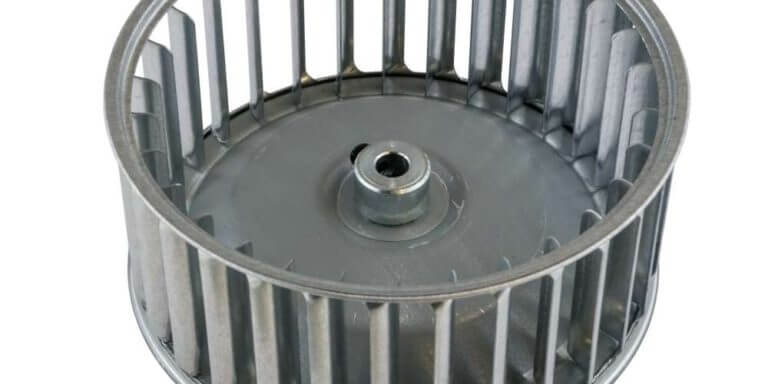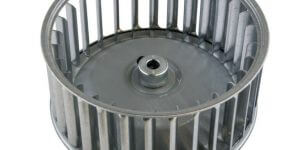
Speed is not the only way to measure Air Curtains:
The output of the air curtain device is measured in terms of the velocity of air. The input power is varied and efforts are made to optimize the performance of the air curtain device.
Static Pressure plays a significant role in the selection of the Air Curtain:
Your selection depends upon the frictional force that occurs when you try to push an object alongside a surface. Static Pressure is the pressure of the fluid on a body when the latter is at rest relative to it.
Air Curtain does not work in all the Wind Conditions:
Like if the air pressure outside is more than that of the pressure inside, then the air curtain won’t work properly.
Air Curtain installation should be generally Installed OUTSIDE:
Air curtains are designed for indoor installations(environment: normal, basic) above or next to the door. Typical installations sites are production and industrial buildings, stores, transport terminals, car services, garages, markets, drying houses, etc.
Air Curtains will not work in a negatively pressurized building:
Air doors work best when the pressure differential between the inside and outside of the building is as close to neutral as possible. Negative pressure, extreme temperature differences, elevators in close proximity, or extreme humidity can reduce the effectiveness of air doors.
Impeller Diameter and RPM play a major role in deciding the flow:
Air Curtains can be used to prevent Cold Air from escaping as in Blast Chillers to Hot Air in Ovens:
Air doors are often used where doors are required to stay open for operational purposes, such as loading docks and vehicle entrances. They help keep outside air, thus reducing infiltration through the opening. The cold draft can be avoided by mixing in warm air heated by the air door. Heated air doors are commonly used when supplemented heat is needed for space, and to reduce the wind chill factor, inside the opening in a colder climate.
Centrifugal Technology works best in non-heated Air Curtains.:
Crossflow technology is generally used in Heated Machines.
After you “take the package” and leave big corporate, you get to choose what’s next. You can go after another corporate gig, go work for a start-up or a smaller company, retire (heaven forbid) or start consulting.
a). Pricing
Sell value, not hours. Always price a project based on its total value to the client. This has nothing to do with the number of hours spent doing the work. There is a reason senior partners at a law firm are more expensive than associates. When you have a 10-minute discussion with a senior partner, you are getting 30 years of knowledge and experience as well as access to an extensive network of contacts and resources (value). You’re not paying for 10 minutes of time; you’re paying for 30 years of wisdom, and it’s usually well worth the fee.
So sell a project, not its component parts. If you think you can do a project in +/-10 hours, and full-time employees who do this work earn $100/hour for their services, use this information as a guideline – but only as a guideline. Determine the value of your work to your client and price accordingly.
b). How Much to Charge
A young boy walks into a candy store. Everything looks delicious and he is overwhelmed with choice. After a few minutes, he sees a piece of candy he really wants, but he is not sure he can afford it. He gets the proprietor’s attention. Almost afraid to hear the answer, he asks, “Excuse me, sir, how much is this?” The candyman looks quizzically at the kid and responds, “How much you got?” The boy takes a moment to count his change and replies, “Er – 25 cents.” As if surprised, the candyman holds back his smile as he proclaims, “Funny, that’s exactly how much it is.” You now know everything there is to know about pricing a consulting project. The market sets the price.
c). A Proper Statement of Work and Deliverables
In order to profitably price a project, you need to have very succinct deliverables specified in a statement of work (SOW). You also need strict deadlines for your deliverables as well as specific parameters for clients’ response time. If a client’s slow response time pushes you over your deadlines, you cannot be held responsible. This should all be clearly outlined in the SOW in a section entitled “Roles and Responsibilities.” If the project takes you longer than you expected, you’ll know better next time. If it takes less time than you expected, you have room to take on additional work. Both outcomes are excellent.
d). Travel Expenses
If you travel for business, your clients will want to inflict their travel policies on your life. This may work for a while, but it is not sustainable. You may think you can fly Coach transcon with two layovers, do business that afternoon, sleep for six hours, fly back through Dallas, change planes, then work a full day on the West Coast. Don’t. At a certain point, nature will force you to develop a sustainable set of personal travel protocols. Why wait? Do it now. “I only fly during the day. I only fly nonstop. I only fly Business Class or in Premium Economy in an aisle seat.” It doesn’t matter what your protocols are; you just need to have them. Now, as it turns out, clients have travel protocols too. Ignore them. Do not let your clients book your travel (unless you qualify for Business Class or First Class nonstop, obviously). Add a few thousand dollars of reimbursable expenses to your fees. For example, “Client will preapprove and reimburse consultant for out-of-pocket expenses of approximately $X,000 per month.” This can be any number, but it puts you in charge of your own travel, which is key.
e). Negotiation
Never personally negotiate your fee with a client. Never. Ever. Not once. No exceptions. Have your attorney, an admin, your wife, a business affairs person, your housekeeper, a friend, a perfect stranger, anyone but you do it. Never quote a price. Never speak about your rate. Never renegotiate a rate while on a job. Never talk money with a client.
If you’re going to be a consultant, hire someone to negotiate your deals for you. This establishes a very important psychological environment for your engagement. You are the superstar talent. You are above petty things like money. Your job is to help your client accomplish its business goals. You can always be nice. You can always have a positive attitude. You’re “the pro from Dover!”
There is another, very practical reason to have a third party negotiate for you. You are a consultant, not an actor. If you think you are being treated unfairly or that you are being underpaid for your work, you will not be able to hide it. The client who made the deal will not know you think you’re being underpaid because you accepted the deal – but you will know, and your work (and your relationship with your client) will suffer for it. A full-time or part-time business affairs person is a necessary overhead cost for a consultant. Spend the money; it will set you up for success.
f). Administration
Considering all of the technology available, you might not think you need an admin to be an effective consultant. After all, there’s voicemail, email, .pdf files, Dropbox – your whole office can live on your smartphone. While this is absolutely true, spending your time answering perfunctory emails and scheduling calls and meetings is a huge waste of your time.
Hire an admin or a service bureau to act as your admin. You can use voicemail, but have a person return calls immediately and schedule phone calls (as if they were appointments) for you. If you’re busy consulting, you cannot and should not keep your own calendar. You should set aside time for office hours (virtual or actual) at a time when you schedule and return calls. If you can afford it, train or hire an executive admin who can handle correspondence and standard proposals, and SOWs. A great admin is a key to maximizing your time as a consultant.
g). Online Presence
This may be obvious, but the first thing a prospective client is going to do is Google you. Then they will search LinkedIn, Twitter, Facebook, and anything else that comes to mind. Your online presence should match your offline presence. Your mobile-friendly website as well as your social media profiles should all be up to date. It’s table stakes in the consulting game.
There is much, much more to this story. Setting up a consulting practice is as much art as science. It is the subject of countless books and seminars. Hopefully, some of these general guidelines will be helpful. Of course, the best way to become a successful consultant is to start consulting. So go forth unafraid! If you’ve got something they want to buy, you’re going to have no trouble selling it



